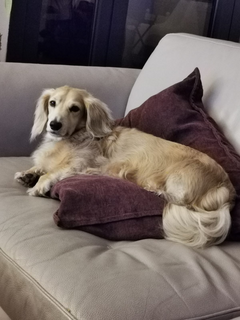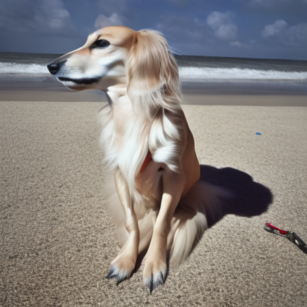LoRA finetuning
LoRAs are a recent and effective approach for fine-tuning Language Model (LLM) and Diffusion models. This technique involves injecting new weights into specific layers, particularly the attention layers, which play a crucial role in these models.
One of the significant advantages of LoRAs is their ability to enable efficient fine-tuning while reducing the file size for sharing the fine-tuned models. This compatibility with the Dreambooth approach further contributes to its widespread adoption.
Fine-tuning Diffusion models can take various forms, including Dreambooth, textual inversion, and LoRA. However, LoRA has emerged as the most prevalent approach due to its ease of use and quick fine-tuning capabilities, along with its compatibility with the Dreambooth approach.
LoRA Dreambooth
@cloneofsimo was the first to introduce this concept to Stable Diffusion. In this blog, I will use his repository to showcase an example of training and inference a new object concept.
Training
Training a diffusion model can be expensive in terms of computational resources. However, training a LoRA is highly efficient since it only requires training the LoRA weights while keeping the remaining parameters frozen.
LoRA Dreambooth enables the learning of new concepts in both the object and style forms. In this case, our focus will be on the object form, although the training and inference approach remains the same for the style form.
Thanks to the efforts of Huggingface in accelerating and simplifying training processes, launching the fine-tuning process can be achieved effortlessly with a single command, eliminating the need for an extremely powerful GPU.
Here’s how you can use it to fine-tune a model using pictures of my dog.
export MODEL_NAME="stabilityai/stable-diffusion-2-1-base"
export INSTANCE_DIR="./data/mug"
export OUTPUT_DIR="./trained_models/"
export TEMPLATE="object"
export TOKEN="<mydog>"
export DEVICE="cuda:0"
lora_pti \
--pretrained_model_name_or_path=$MODEL_NAME \
--instance_data_dir=$INSTANCE_DIR \
--output_dir=$OUTPUT_DIR \
--train_text_encoder \
--resolution=512 \
--train_batch_size=1 \
--gradient_accumulation_steps=4 \
--scale_lr \
--learning_rate_unet=1e-4 \
--learning_rate_text=1e-5 \
--learning_rate_ti=5e-4 \
--color_jitter \
--lr_scheduler="linear" \
--lr_warmup_steps=0 \
--placeholder_tokens=$TOKEN \
--use_template=$TEMPLATE \
--save_steps=100 \
--max_train_steps_ti=1000 \
--max_train_steps_tuning=1000 \
--perform_inversion=True \
--clip_ti_decay \
--weight_decay_ti=0.000 \
--weight_decay_lora=0.001\
--continue_inversion \
--continue_inversion_lr=1e-4 \
--device=$DEVICE \
--lora_rank=1 \
Running this using on an rtx 2080 ti should take around 15 minutes and will generate multiple checkpoint of the trained LoRA.
Inference
To infer with trained LoRA, we need to patch the stable diffusion model used. Basically, we load the LoRA weights, and add them to the required layers. We can then scale the LoRA weights using an alpha parameter that will follow this formula:
$ W_{sd} = W_{StableDiffusion} + \alpha W_{LoRA} $
By setting $\alpha$ at 0, we will only use the weights of Stable Diffusion, setting at 1 will make it fully use the LoRA weights, and greater than 1 will make the model mainly use the LoRA weights.
The inference code is as simple as this:
from diffusers import StableDiffusionPipeline, EulerAncestralDiscreteScheduler
import torch
from lora_diffusion import tune_lora_scale, patch_pipe
import argparse
def parse_args():
parser = argparse.ArgumentParser()
parser.add_argument("--model")
parser.add_argument("--prompt")
parser.add_argument("--scale", type=float, default=0.8)
args = parser.parse_args()
return args
if __name__ == '__main__':
args = parse_args()
# Load Stable Diffusion
model_id = "stabilityai/stable-diffusion-2-1-base"
pipe = StableDiffusionPipeline.from_pretrained(
model_id,
torch_dtype=torch.float16
).to("cuda")
pipe.scheduler = EulerAncestralDiscreteScheduler.from_config(
pipe.scheduler.config
)
# Apply the LoRA layers on the model
patch_pipe(
pipe,
args.model,
patch_text=True,
patch_ti=True,
patch_unet=True,
)
# Tune the LoRA alpha
tune_lora_scale(pipe.unet, args.scale)
tune_lora_scale(pipe.text_encoder, args.scale)
# Inference
torch.manual_seed(0)
image = pipe(
args.prompt,
num_inference_steps=50,
guidance_scale=7
).images[0]
image.save("output.jpg")
Here is an image of my cute dog:
 My cute dog :D
My cute dog :D
And here are some generated images:

 < dog > sitting at the beach
< dog > sitting at the beach
Side Notes
A recent paper of Google claims to provide much better results in the styling category using approach called StyleDrop. Combining StyleDrop for the style and Dreambooth to learn new objects might allow to generate images with even more accurate results for more specific use cases.